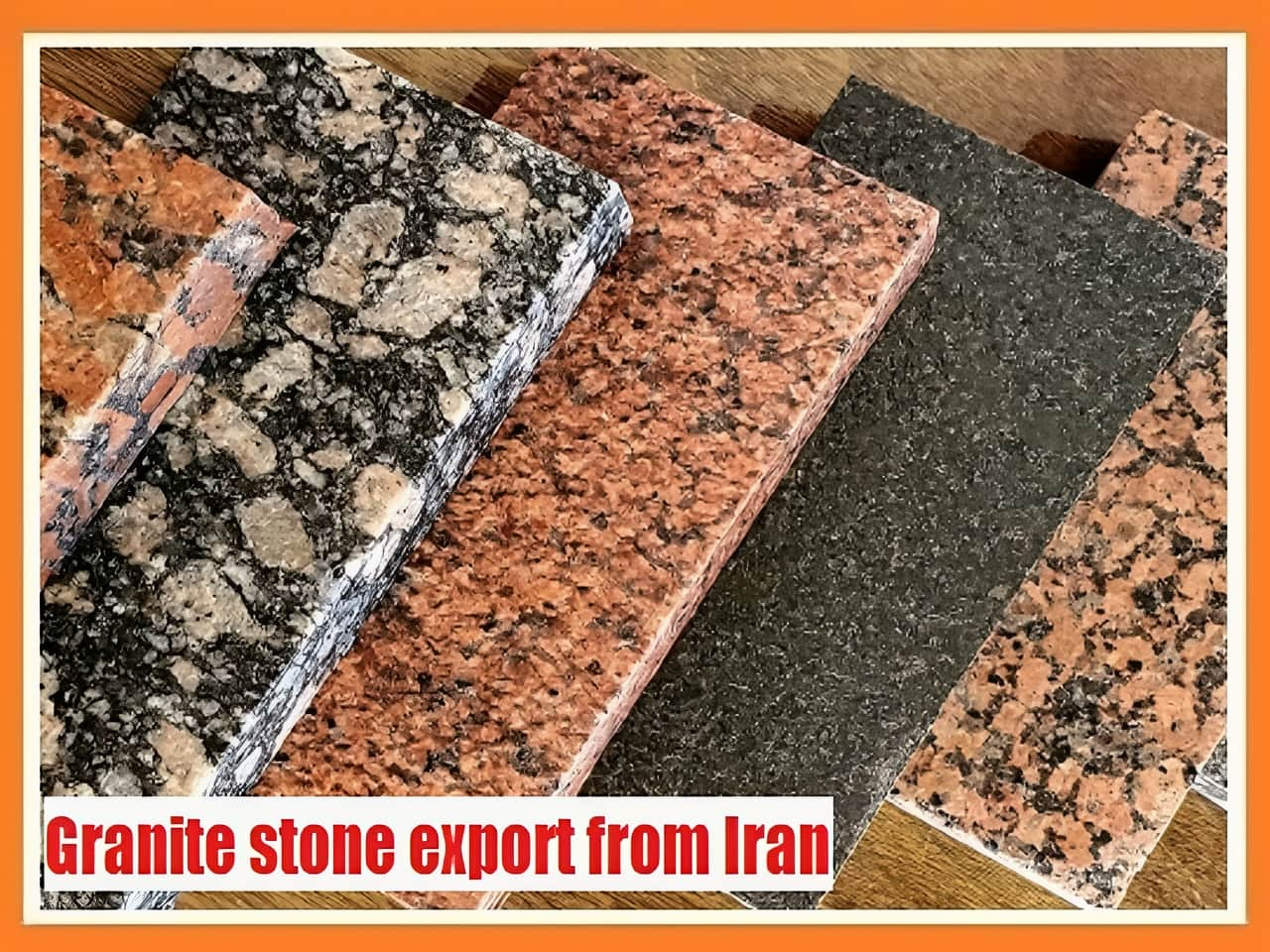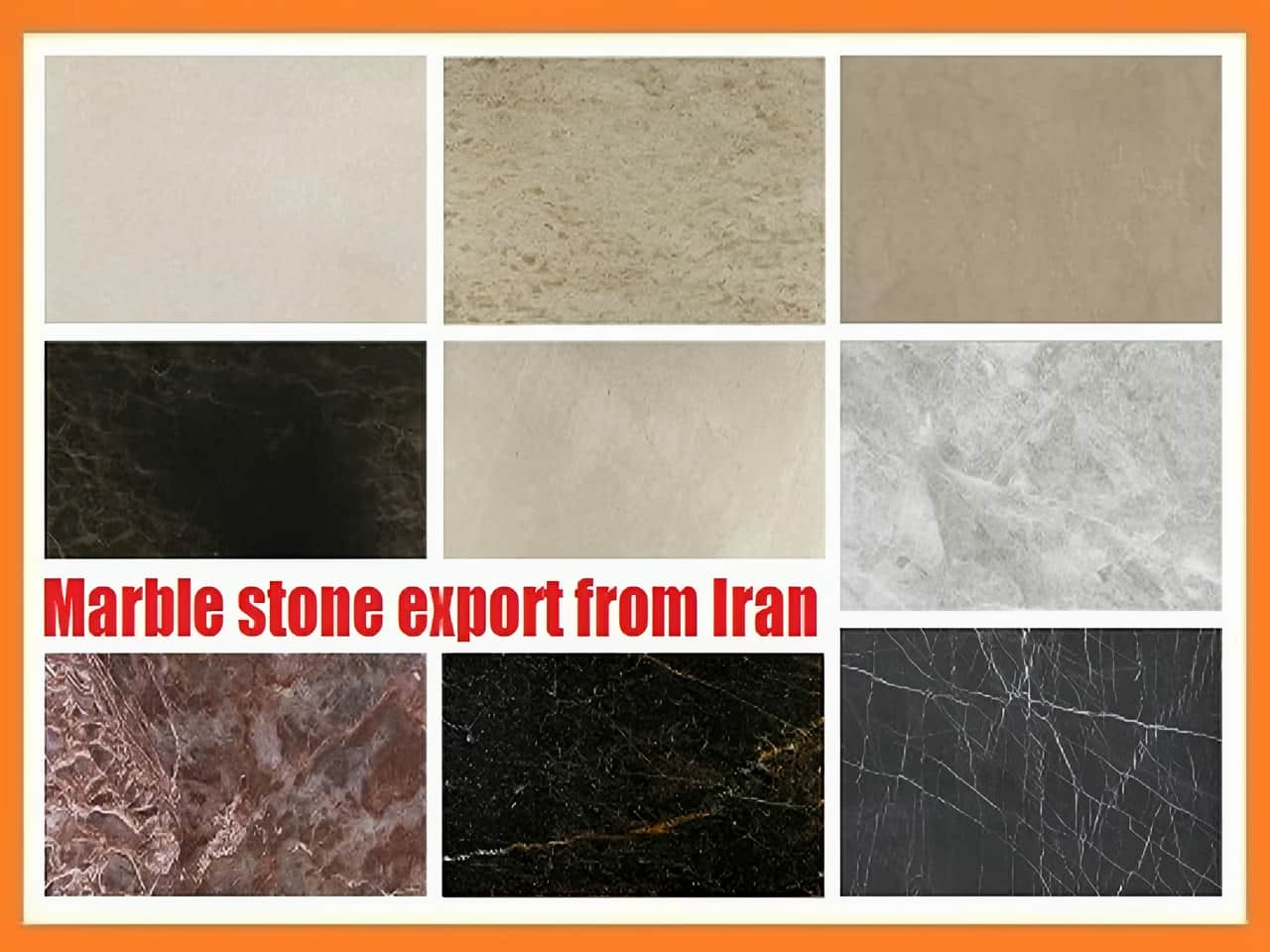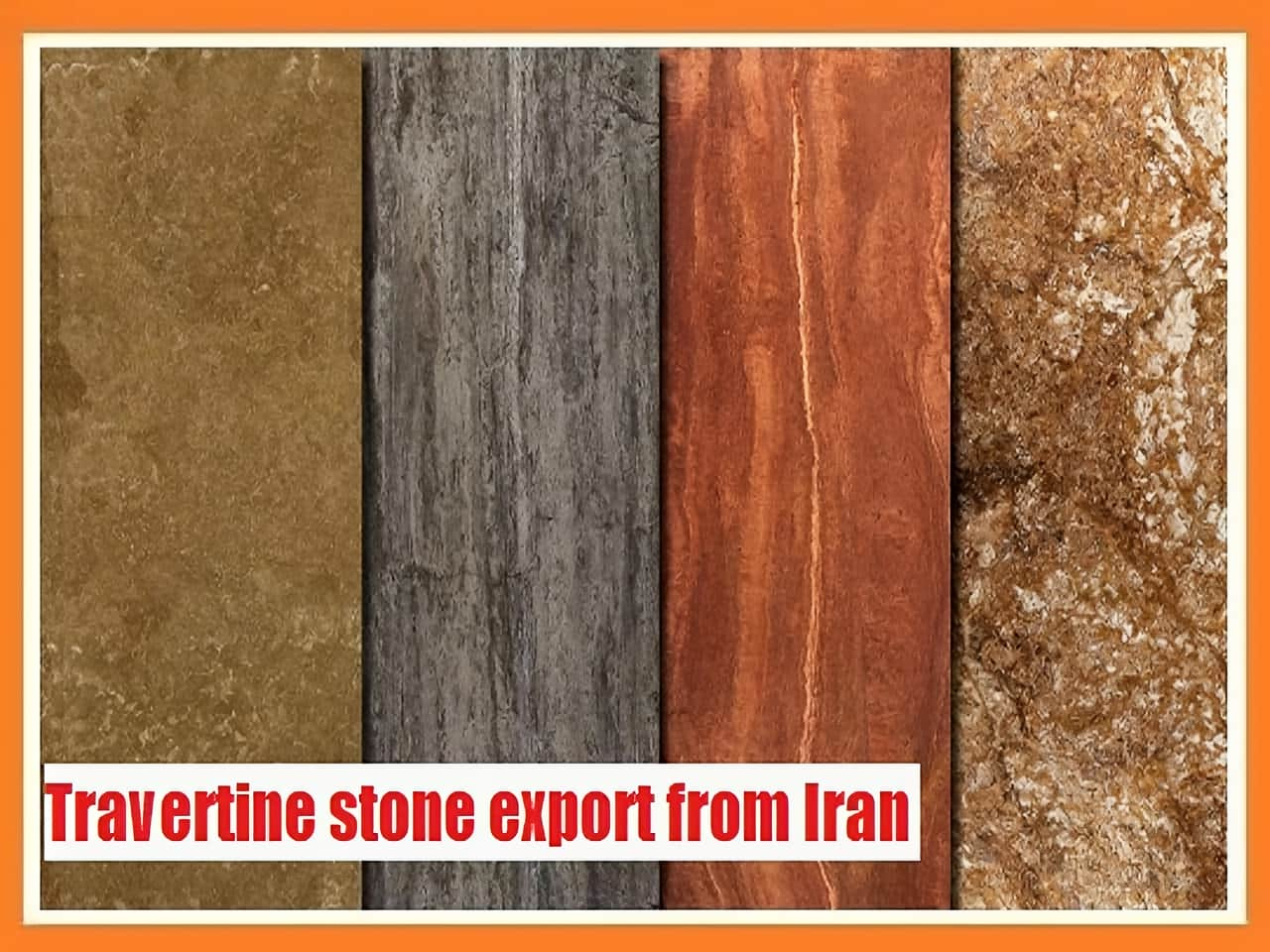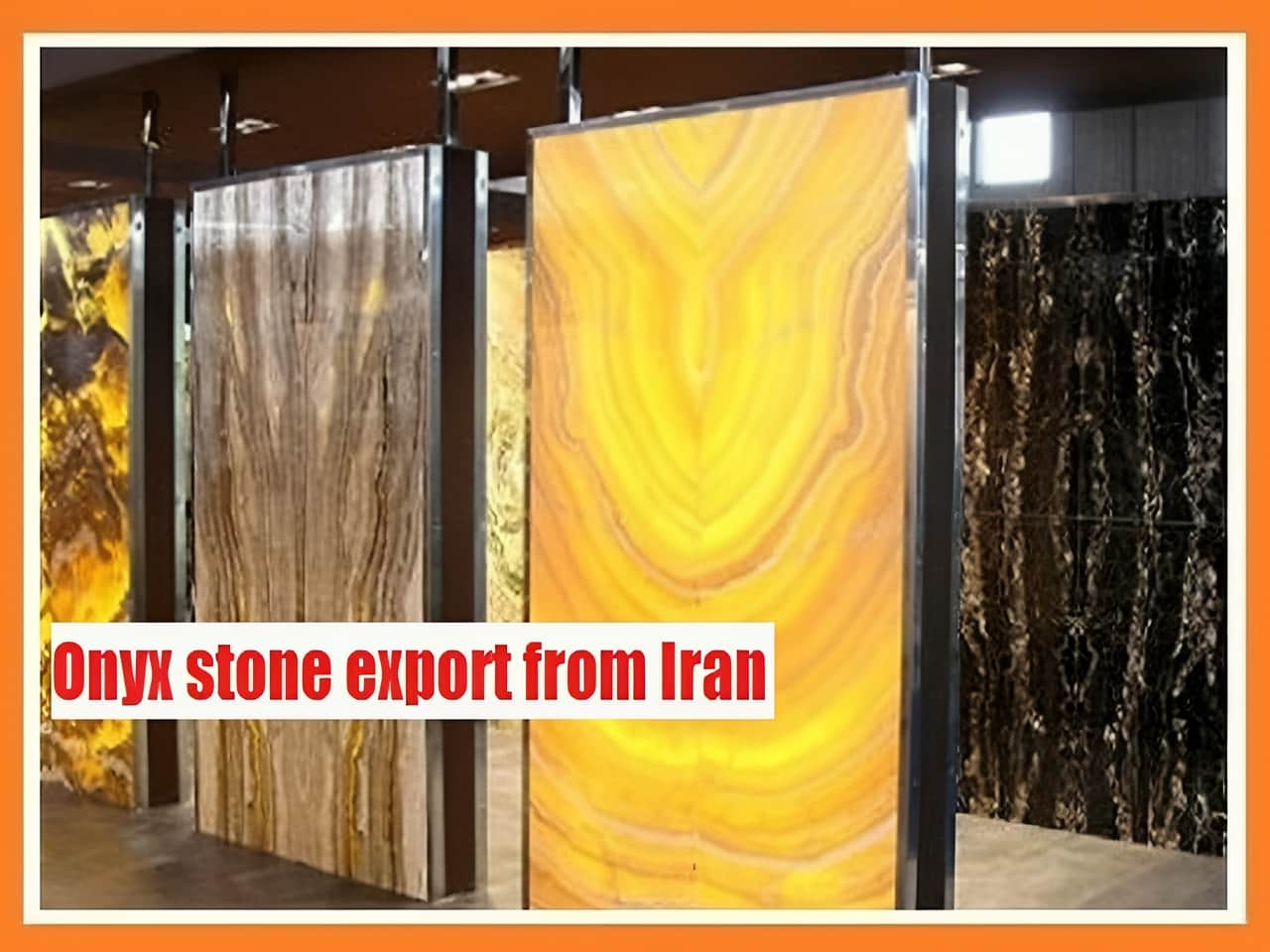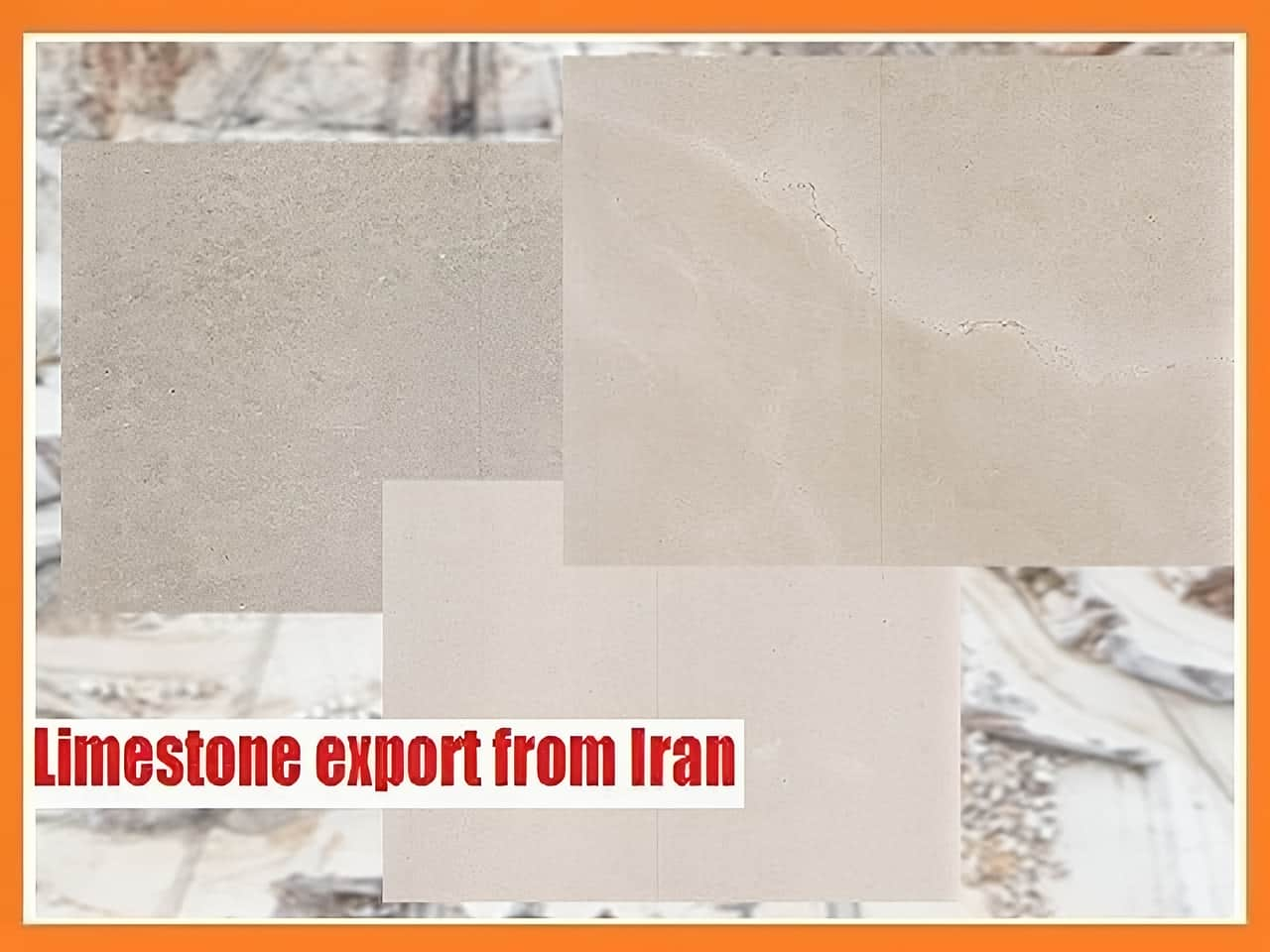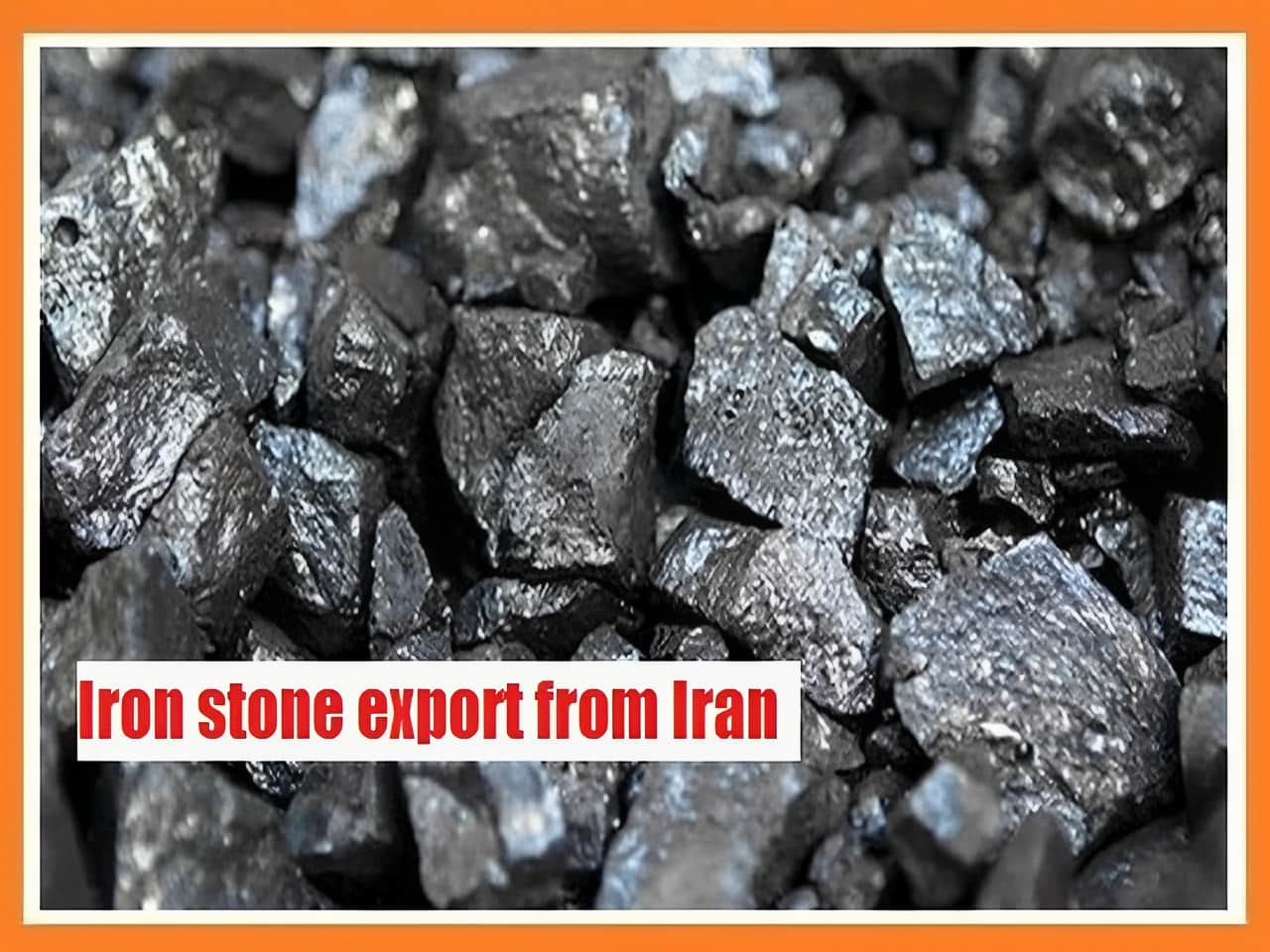Premium Iranian Stone Slabs exports
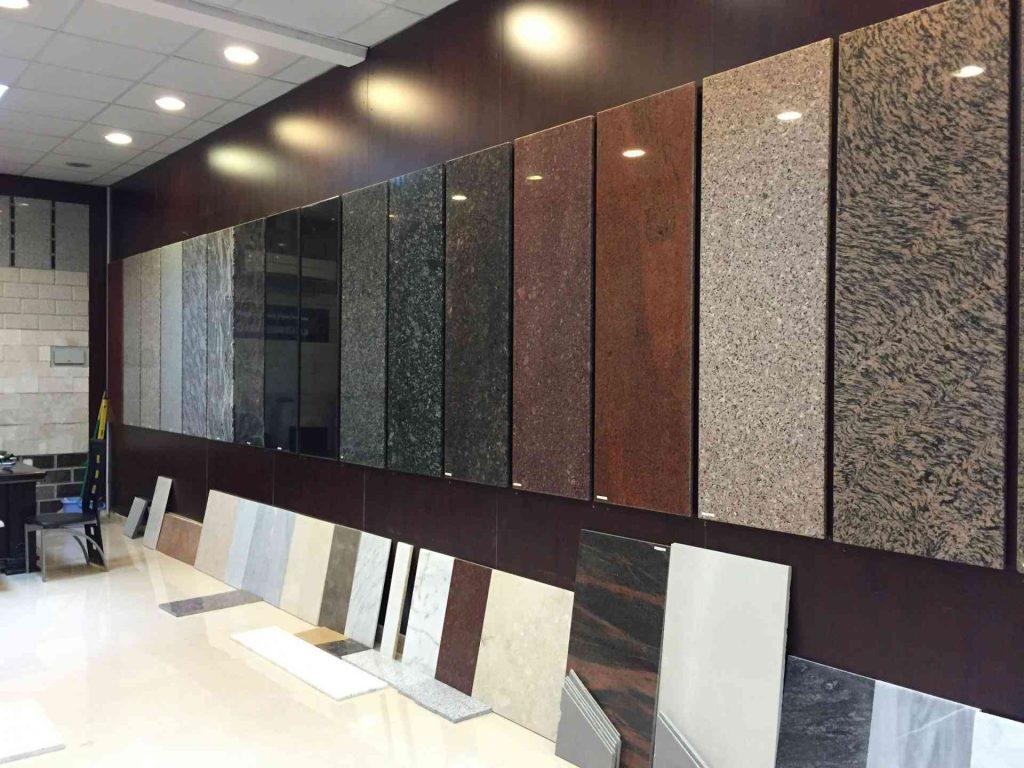
Iranian stone slabs are renowned worldwide for their exceptional quality, diverse range, and luxurious appeal. Sourced directly from some of the finest quarries in Iran, these stone slabs offer a perfect combination of durability, unique textures, and stunning finishes, making them ideal for high-end design and construction projects. Whether you’re seeking marble, granite, onyx, or travertine, Iranian stone slabs provide premium options that elevate any project with their natural elegance.
The Most Important Stones for Export from Iran
Iran’s stone industry is a significant player in the global market, with a strong presence in countries such as China and the UAE. The country’s rich geological resources and advanced processing technologies have made its stones highly sought after worldwide. So, what are the main stones exported from Iran?
Travertine Stone
Travertine is a popular decorative stone, known for its porous texture and stunning variety of colors. Formed from hot spring deposits, the natural air pockets in the stone result from trapped gases in the water. This unique feature gives travertine its distinctive appearance, making it a top choice for building facades, walls, pool floors, and paving. The abundance of travertine mines in Isfahan, one of Iran’s largest production areas, contributes to its dominance in the export market. The high-quality travertine and marble extracted from these mines continue to meet global demand for premium building materials.
Granite Stone
Granite is another highly sought-after building stone, prized for its durability and versatility. Known for its strength and variety of colors, granite is widely used in construction projects, particularly for flooring, countertops, and facades. Marwarid granite, one of the most renowned types of Iranian granite, is highly valued in international markets. Iran’s Khorasan province is home to vast reserves of pearl granite, which is found in a range of colors including white, gray, red, black, pink, green, and blue, making it a versatile choice for a wide array of applications.
Marble Stone
Marble, a metamorphic stone primarily composed of calcite, is renowned for its aesthetic appeal and high strength. It has been used for centuries in sculptures and high-end architecture, contributing to its status as a valuable export product. The stone’s dense texture provides superior resistance to wear, making it a staple in both residential and commercial construction. Iran’s marble industry plays a key role in the country’s stone exports, and the global demand for this luxurious material continues to grow.
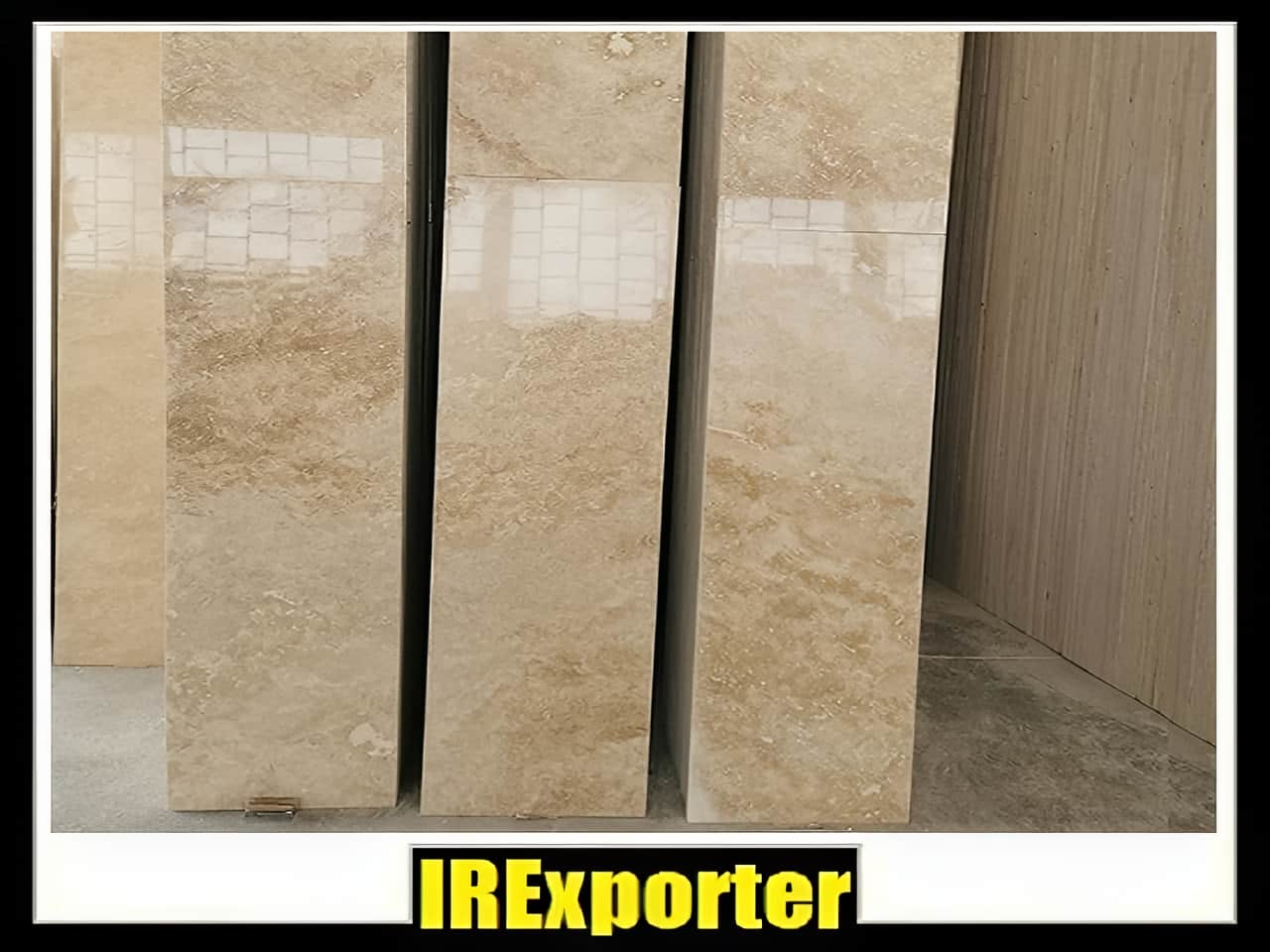
Destinations of Iran’s Stone Exports
Iran plays a significant role in the global stone industry, maintaining a strong presence in international markets. With its rich reserves and advanced production techniques, Iran exports its stones to various countries, particularly in the Middle East, Asia, Europe, and beyond. Let’s explore the key destinations for Iranian stone exports:
Stone Exports to Oman
Located on the southeastern coast of the Arabian Peninsula, Oman shares a water border with Iran through the Oman Sea. With limited domestic production of raw materials, Oman heavily relies on imports, making Iranian stones an essential part of its construction and industrial needs. Iranian travertine, granite, and marble, along with metals such as cast iron and iron, are key export products to Oman.
Stone Exports to Qatar
Qatar, a neighbor to Iran through the Sea of Oman, has become an increasingly important market for Iranian stones, particularly in recent years. As Qatar faces economic shifts due to disruptions in relations with Saudi Arabia and the UAE, it has turned to Iran for imports. Marble, granite, and travertine, along with other construction materials such as steel, plaster, and cement, are among the main products exported from Iran to Qatar.
Stone Exports to Turkey
Turkey, strategically located as both a neighbor and a gateway between Europe and Asia, is a prominent destination for Iranian stone exports. The country’s booming construction industry has led to a significant demand for Iranian marble, granite, and travertine. The growing infrastructure projects in Turkey ensure a steady market for high-quality Iranian stones.
Stone Exports to India
Despite political challenges, India remains a major importer of Iranian stones, especially granite and marble. Iran shares a land border with India via Pakistan, facilitating trade across the region. Although the volume of exports fluctuates due to political tensions, India continues to rely on Iran for high-quality stone products, contributing to the continued importance of the trade relationship.
Stone Exports to China
China, one of the world’s largest markets, has strong trade ties with Iran, particularly in oil and minerals. Iron ore and rock salt are some of the key Iranian exports to China, but stones also play a role. Despite challenges, including political tensions and customs issues, Iran’s stone exports to China remain an attractive option due to the country’s competitive pricing and high-quality output.
Stone Exports to Iraq
Iraq, another key neighbor of Iran, presents a growing market for Iranian building materials, especially marble and granite. With substantial oil exchanges and a rapidly developing construction sector, Iranian stones are in high demand for both residential and commercial projects in Iraq, reinforcing Iran’s position as a leading supplier of building materials in the region.
Stone Exports to Russia
Russia, a major consumer of Iranian products, presents a significant market for Iranian stones. The country imports various types of stones, including granite, marble, and other high-quality building materials. Iranian stones are highly valued for their competitive pricing and premium quality, making them a preferred choice for construction projects in Russia.
Stone Exports to Georgia
Despite its own mineral resources, Georgia imports building stones from Iran due to limitations in its stone extraction and cutting capabilities. Iran’s advanced stone-cutting technology and affordable pricing make it an ideal partner for Georgia, which relies on Iranian marble and other types of decorative stones for its growing construction sector.
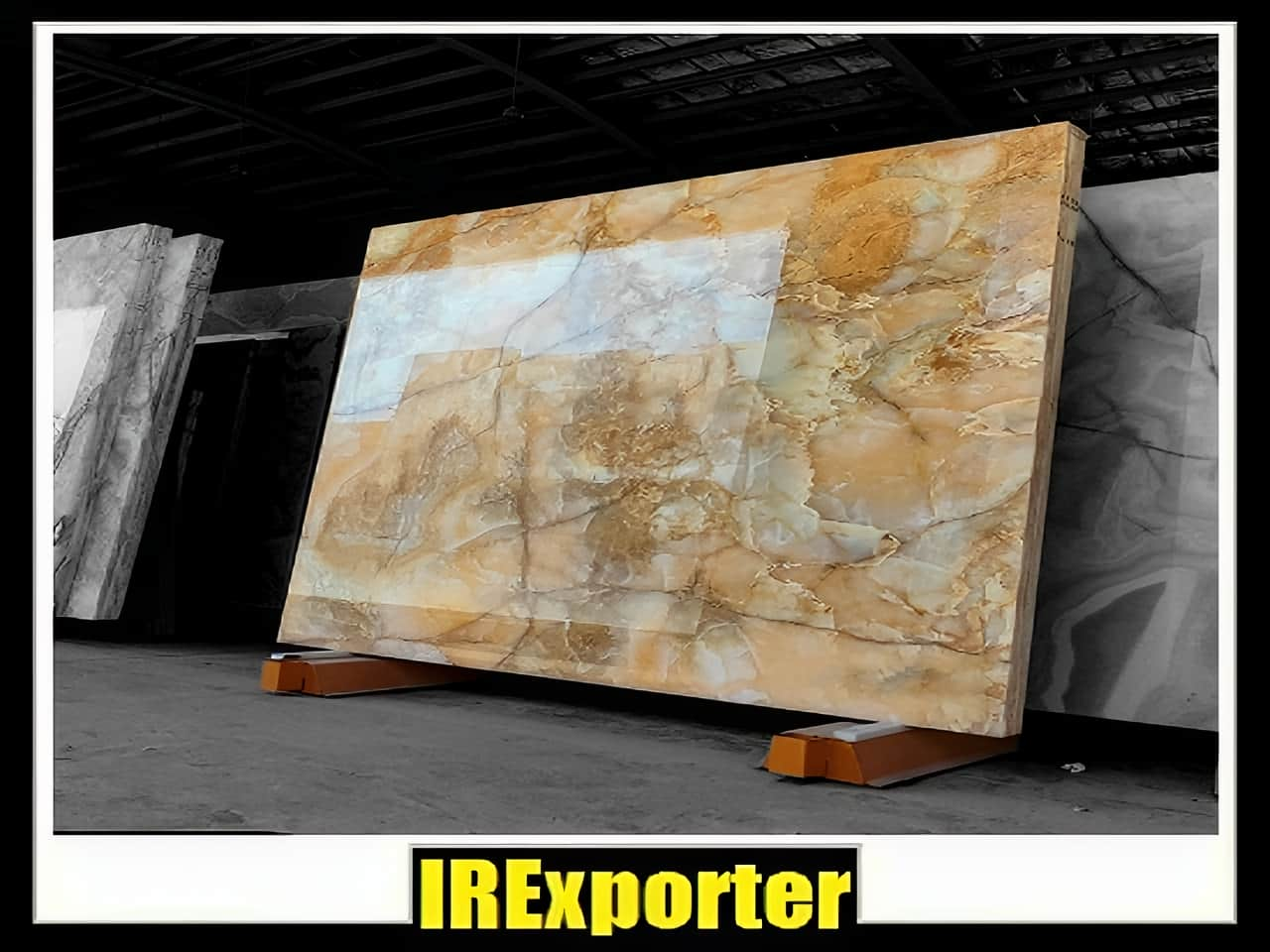
Stone Exports from Iran: A Comprehensive Overview
Iran is a global leader in the stone export industry, ranking eighth worldwide, and is one of the top producers of a variety of natural stones. The country exports a wide range of stones, including travertine, granite, marble, onyx, and limestone, to diverse international markets. These stones are highly sought after due to their quality, durability, and aesthetic appeal. Below is a detailed overview of Iran’s stone exports, highlighting the country’s production capacity, key markets, and the challenges the industry faces.
Stone Exports to Europe
Iran holds a prominent position in the European stone market, contributing about 3% to the total stone imports of European countries. Key European markets for Iranian stones include Germany, Austria, Italy, and North Macedonia. Among the most commonly imported stones are granite, marble, rough travertine, and cut stone.
Iran’s diverse and high-quality offerings continue to appeal to European buyers, especially as the demand for natural stones in construction, interior design, and landscaping increases.
Iran’s Stone Export Volume
Iran boasts an impressive network of approximately 10,000 mines dedicated to non-ferrous metals, stones, and industrial clay, with 1,900 mines focused on decorative stones. The country’s total mining capacity is estimated to be around 47 billion tons, with 4 billion tons of this dedicated to various types of stone production.
In terms of exports, Iran’s stone exports for the current year reach an impressive 7 million tons, comprising 6 million tons of processed stones and 1 million tons of raw stone blocks and carpets.
Challenges in Iran’s Stone Export Industry
Despite its significant presence in the global stone market, Iran faces several challenges that hinder the growth of its stone export industry:
-
Political Tensions & Sanctions: Political instability and international sanctions, especially in the banking and currency sectors, reduce the willingness of foreign countries to engage in trade with Iran. This has created barriers for Iranian stone exporters.
-
Tariffs & Domestic Barriers: The Iranian government has imposed a 25% tariff on stone exports, which has discouraged domestic producers from exporting stones. Additionally, weak marketing strategies and limited information exchange further restrict the growth of Iranian stone exports.
-
Market Competition: Iran also faces growing competition from other stone-producing nations, which has intensified the need for innovation and quality improvements in its stone products.
Leading Stones Exported by Iran
1. Iranian Travertine
Travertine is one of Iran’s most important stone exports. A type of porous limestone, it is widely used for applications such as building facades, walls, interior designs, pool tiles, flooring, and paving.
Iran has more than 200 travertine mines, making it one of the world’s leading producers. The Isfahan, Central, East Azerbaijan, and Yazd provinces are the primary sources of Iranian travertine, which accounts for 90% of the country’s travertine production. In 2020, Iran recorded $2 million in travertine exports.
2. Iranian Granite
Iranian granite is highly sought after for its diverse colors and exceptional quality. Some notable varieties include:
-
Natanz White Granite: Exported to countries like Turkmenistan, Azerbaijan, Iraq, Armenia, Turkey, and Russia.
-
Nehbandan Granite: Known for its versatility, Nehbandan granite is exported in slabs and tiles, with customization available based on customer specifications.
-
Yazd Red Granite: Valued for its high density, Yazd red granite is regarded as one of the finest red granite stones in the world.
Iraq is one of the largest destinations for Iranian granite, with exports to Syria, Russia, and Turkey also being significant.
3. Iranian Marble
Iranian marble is a high-demand export product, prized for its beauty and durability. In 2020, Iran’s non-oil exports, including building stones, amounted to over 20 million kilograms, generating significant revenue. Some of the best Iranian marbles include:
-
Azarshahr Marble
-
Sangab Marble
-
Sanandaj Marble
-
Kerman Green Marble
-
Cadiz Marble
These premium marbles are sought after in international markets for both residential and commercial applications.
4. Natural Iranian Onyx
Iran is recognized globally as the leading exporter of onyx marble, prized for its translucency and unique aesthetics. Notable Iranian onyx varieties include:
-
Onyx Isfahan
-
Dehbid Onyx Marble
-
Four-Marble Onyx
These varieties are exported worldwide, further solidifying Iran’s position as a top producer of onyx.
Global Export Reach and Key Markets
Iran’s stone exports reach countries across the globe, including markets in the Middle East, Europe, and Asia. The primary destinations for Iranian stone exports include:
-
Turkey
-
Pakistan
-
Uzbekistan
-
Iraq
-
Georgia
-
Afghanistan
-
Cyprus
-
Kuwait
-
Qatar
-
Syria
-
Armenia
-
Turkmenistan
-
Russia
-
Morocco
-
Australia
-
New Zealand
-
Germany
-
Sweden
-
Bangladesh
-
Thailand
-
Singapore
The growing presence of Irexporter Trading Company in this field has helped facilitate exports to a wide range of countries, ensuring high-quality stones are delivered to clients worldwide.
Stone export is a cornerstone of Iran’s non-oil economy. Despite challenges such as sanctions, tariffs, and political tensions, Iran remains a major player in the global stone market. Its wide variety of high-quality stones, including travertine, granite, marble, and onyx, ensures that Iran continues to serve as a reliable and sought-after supplier of natural stones worldwide.
With abundant natural resources and a strong history of stone production, Iran’s stone export industry is poised for further growth, offering immense potential for both local and international markets.

types of stones exported from iran
iran is known for producing and exporting a wide range of high-quality stones, including marble, travertine, granite, onyx, limestone, sandstone, soapstone, quartzite, and serpentine. These stones are utilized in various applications such as construction, architecture, sculpture, and landscaping. The diversity and quality of iranian stones make them highly sought after in international markets.
the history of stone export in iran
iran has a rich history of stone export, dating back to ancient times. Stones were extensively used in persian architecture, including famous structures like persepolis. Over time, iran’s stone industry has evolved and modernized, leadingto increased production and exports. Today, iran stands as a major player in the global stone market, with a reputation for high-quality stones and a wide variety of options. The government has supported the industry’s growth, and iran actively promotes its stone products in international markets to attract more buyers and strengthen its position as a leading stone exporter.
despite challenges such as political tensions, sanctions, and competition, iran’s stone export industry continues to thrive. The country’s abundant natural resources, advanced mining and processing facilities, and skilled workforce contribute to its success in producing and exporting various types of stones.
iran’s stone exports are primarily directed to countries in the middle east, europe, and asia. The exports include raw materials as well as finished products like slabs, tiles, and mosaics. Iran’s marble, travertine, granite, onyx, limestone, and other stones are highly valued for their quality and aesthetics, making them popular choices for construction, architecture, and interior design projects worldwide.
in terms of stone exports, iran ranks among the top countries globally. It offers a wide range of stones with unique colors, patterns, and textures, allowing buyers to find the perfect fit for their specific needs. The government and export trading companies facilitate the smooth process of purchasing and exporting iranian stones, ensuring customer satisfaction and quality assurance. With its rich history, abundant resources, and continuous growth in the stone export industry, iran is well-positioned to maintain its prominent role in the global market. The demand for iranian stones remains strong, and the country’s commitment to quality and customer satisfaction further enhances its reputation as a reliable source of high-quality stones.
What are the types of stones exported from Iran?
Iran is known for exporting various types of stones, including marble, travertine, granite, onyx, and limestone.
What are the main destinations for stone exports from Iran?
The main destinations for stone exports from Iran are China, India, Turkey, the UAE, and Iraq. These countries import Iranian stones for use in construction, decoration, and other purposes.
| Heading | Content |
|---|---|
| Introduction | Are you looking for the best Iranian natural stone slab supplier and exporter company? Look no further! We pride ourselves on being the top provider of high-quality Iranian natural stone slabs. Our commitment to excellence, combined with our wide range of products and competitive pricing, makes us the ideal choice for all your natural stone needs. |
| Product Range | We offer an extensive selection of Iranian natural stone slabs in various colors, patterns, and sizes. Our product range includes marble, granite, travertine, and onyx slabs, among others. Whether you need slabs for residential or commercial projects, we have the perfect solution for you. Our experienced team is dedicated to helping you find the ideal stone slab to enhance the beauty of your space. |
| Quality and Reliability | When you purchase natural stone slabs from us, you can be assured of the highest quality and reliability. We source our stones from reputable quarries in Iran, known for producing some of the finest natural stones in the world. Our slabs undergo rigorous quality control measures to ensure they meet the highest standards. We take pride in delivering durable and visually stunning stone slabs that exceed customer expectations. |
| Competitive Pricing | We understand that price is an important factor in any purchase decision. That’s why we offer competitive pricing on all our Iranian natural stone slabs. Our pricing is transparent and tailored to suit your specific requirements. We believe in providing the best value for your investment without compromising on quality. Contact us today to discuss your needs and receive a personalized quote for your desired stone slabs. |
| Global Export Reach | As a leading supplier and exporter, we have a strong global export reach. We ship our Iranian natural stone slabs to customers worldwide. No matter where you are located, we can efficiently deliver our products to your doorstep. Our professional logistics team ensures safe packaging and timely delivery of your order. Experience hassle-free international transactions and elevate your projects with our premium stone slabs. |
| Conclusion | In conclusion, when it comes to the best Iranian natural stone slab supplier and exporter company, we are your trusted partner. With our diverse product range, unwavering commitment to quality, competitive pricing, and global export reach, we are dedicated to exceeding your expectations. Contact us today to explore our offerings and make your next project a stunning success with our exceptional natural stone slabs. |
FAQs
1. Can I purchase small quantities of natural stone slabs?
Yes, we cater to both small and large orders. Whether you need a few square meters or several tons of stone slabs, we can accommodate your requirements.
2. Do you offer customized sizes and finishes?
Absolutely! We understand that each project has unique specifications. We provide custom sizing and finishing options to ensure the stone slabs perfectly fit your design vision.
3. How do I request a price quote?
To receive a personalized price quote, simply contact us through our website or reach out to our sales team directly. Provide details about your desired stone type, quantity, and any specific requirements, and we’ll promptly assist you.
4. What is the lead time for international orders?
The lead time for international orders depends on the destination and the quantity of the slabs. Our logistics team will provide you with an estimated delivery timeline based on your location and order size.
5. Do you provide samples?
Yes, we offer samples of our natural stone slabs. Contact us to discuss your sample requirements, and we’ll ensure you receive the samples you need to make an informed decision.
6. Are your stone slabs suitable for outdoor applications?
Yes, our stone slabs are suitable for both indoor and outdoor applications. However, depending on the specific stone type, certain finishes or treatments may be recommended for optimal performance in outdoor environments.
| slab stone export from Iran | |
|---|---|
| 💎 Product benefits | Good price and High quality |
| 💲 Export slab stone price | The lowest price in the trade market |
| ⏳ Quality of slab stone for export | Top-Grade |
| ⏱ How to send products | By ship shipping |
| 🎯 How to order | By email and call |
Superior Variety and Competitive Prices
Iran’s stone industry is known for its extensive variety of stone types, including luxurious marble, granite, and rare onyx slabs. These stones are perfect for creating breathtaking flooring, countertops, facades, and other design features that require high-end materials. Sourced from the best quarries in Iran, these slabs offer exceptional quality and unique finishes, giving each project a timeless aesthetic.
By purchasing directly from trusted suppliers in Iran, you can access competitive prices for premium stone slabs. Our comprehensive export price list ensures you can find the best deals, whether you’re sourcing materials for luxury residential or commercial projects.
Why Choose Iranian Stone Slabs?
Iran is globally recognized for its abundant natural resources, particularly in stone minerals. The country is home to numerous stone mines, making it one of the leading stone exporters worldwide. The sheer volume of available stone resources has positioned Iran as a major stone export hub, with a strong focus on meeting global demand.
Stone Surplus and Export Focus
The Iranian domestic market is saturated with high-quality stone minerals, resulting in an excess supply. As a result, stone export has become a crucial industry in Iran. The abundance of stone deposits—ranging from marble and granite to onyx and travertine—positions Iran as one of the top suppliers to international markets.
Iranian stone exports are driven by this surplus and the demand for top-tier materials worldwide. Whether for large-scale construction projects or smaller interior design endeavors, Iranian stone slabs have become a symbol of quality and sophistication.
Explore the Best Deals on Premium Iranian Stones
Browse through our extensive collection of Iranian stone slabs and explore an array of options that are perfect for your upcoming projects. From the soft elegance of marble to the bold statement of granite, Iranian stones offer unmatched quality at competitive prices. By purchasing directly from trusted suppliers in Iran, you can rest assured of receiving premium products that meet your design and budget requirements.
Main Stone Types Exported from Iran
-
Marble: Known for its elegance and timeless beauty, Iranian marble comes in a variety of colors and textures, perfect for flooring, countertops, and decorative features.
-
Granite: Durable and versatile, Iranian granite is favored for both residential and commercial applications, offering exceptional strength and beauty.
-
Onyx: A rare and translucent stone, Iranian onyx adds a luxurious touch to any space, with unique patterns and colors that make it a standout choice for high-end projects.
-
Travertine: Valued for its warmth and rustic charm, Iranian travertine is used in both interior and exterior applications, from facades to flooring.
Iran’s stone export industry is a cornerstone of the country’s economy, and Iranian stone slabs remain a top choice for projects around the world. With a wide variety of high-quality stones available at competitive prices, Iran continues to be a leading source of luxurious and durable stones for design projects. By choosing Iranian stone slabs, you’re not only investing in quality but also embracing the timeless beauty and natural elegance of some of the finest stones in the world.
Explore our comprehensive export price list today and elevate your design projects with the exquisite charm of Iranian stones.
